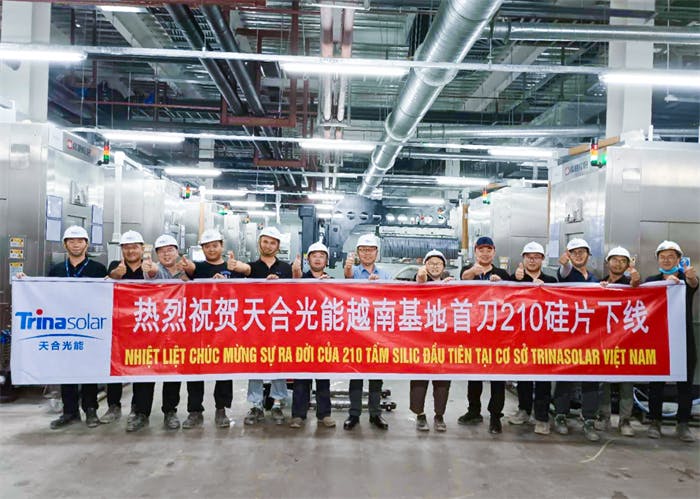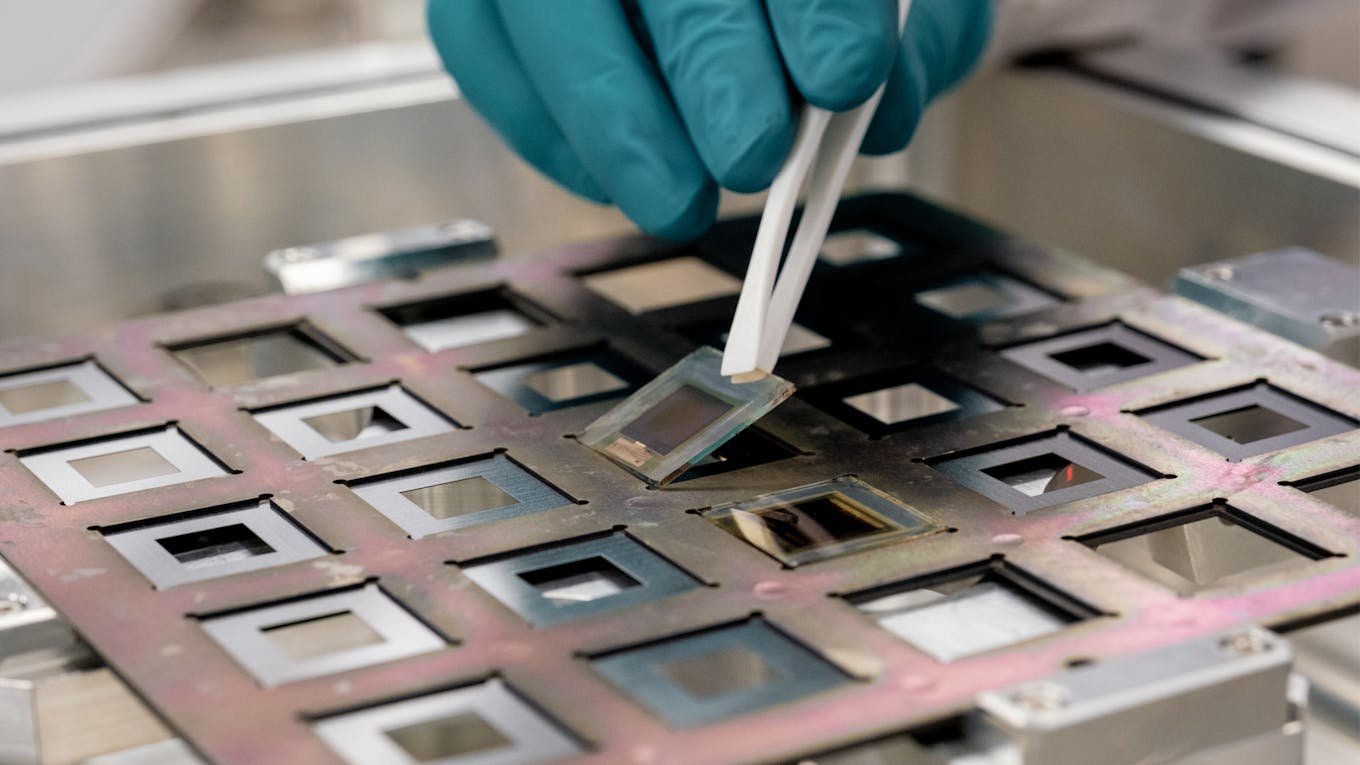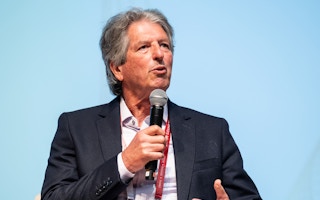Nevermind that nations at last month’s COP28 climate negotiations agreed to help triple renewable energy capacity globally in seven years. A pioneer of photovoltaic technology wants the solar industry to focus on a larger goal: increase the yearly installed capacity by 10 times, in the next 10 years.
To continue reading, subscribe to Eco‑Business.
There's something for everyone. We offer a range of subscription plans.
- Access our stories and receive our Insights Weekly newsletter with the free EB Member plan.
- Unlock unlimited access to our content and archive with EB Circle.
- Publish your content with EB Premium.
That would be the level at which fossil fuels can be replaced, and climate change meaningfully tackled, Professor Martin Green said. International organisations do not model such high growth rates because their calculations tend to be conservative, he added.
The 76-year old Australian engineering don has spent decades poring over the chemistry and circuitry of solar panels. Green has held annual photovoltaic efficiency records for silicon cells in about 30 of the last 40 years. Ninety per cent of the market today uses one of his panel designs. His Chinese students are often credited for an industry boom in the 2000s, when large solar panel factories went global. Media often gives him the “godfather of solar” moniker.
Solar power is seen as a key climate technology today. Annual installation rates have grown tenfold over the past decade, and total capacity surpassed 1 terawatt (TW) in 2022 – contributing to about an eighth of the total power generating potential worldwide.
But the rallying cry is for solar and renewables to displace fossil fuels, and Green acknowledges that another dectupling of solar capacity will be challenging for the mature energy industry. Better government planning will be needed to expand markets, and perhaps large solar farms can float on gentle equatorial waters if land is scarce, he said.
Meanwhile, scientists are racing to improve the efficiency of solar cells from 20-odd per cent to over 40 per cent, possibly through stacking advanced materials on top of silicon wafers. A group of materials known as “perovskites” have shown the most promise, though they contain toxic lead and still have durability issues. Other designs have been floated, and Green thinks they should receive more attention.
Eco-Business caught up with Green in Singapore, where he was speaking at the Global Young Scientists Summit, to hear about the latest innovations in photovoltaics and his outlook for the solar industry.
What are the energy and climate implications of eventually having 40 per cent efficient solar cells on the market, compared to the 20 per cent efficient ones today?
Solar cells already provide one of the cheapest way of generating electricity in most countries, according to the International Energy Agency. Commercial solar modules now are in the 20 to 24 per cent sort of efficiency range, and the present cells are cheap enough.
But if you can get to 40 per cent, that will just drive them to a new level of cost efficiency. The lower you can go with cost, the quicker their uptake will be. You can install more panels as a way of overcoming intermittency issues. There have been numerous studies that have shown that you can reliably run electricity networks on solar and wind, combined with storage and transmission.
With more efficient panels you can also use less panels and less land area for a given capacity, which might be particularly important for countries like Singapore where space is not really available.
Can more efficient cells arrive in the market fast enough to fight climate change? We only have a few years left before we breach the 1.5°C warming limit.
I think we’ve already missed the 1.5°C opportunity – last year planetary warming already reached 1.48°C. But a 2°C limit is still on the table – that is worth shooting for.
In reality things haven’t been happening quickly enough to even reach 2°C. The big hope is, if solar can maintain the growth rates it has in the recent past, it will be at a level to provide significant CO2 emissions reductions and displace fossil fuels. In Australia it is happening more rapidly than most people would expect.
Unfortunately I don’t think the adoption of 40 per cent efficient cells is coming fast enough; but we’re pushing to bring it about as quickly as we can. There is one technology of particular interest at the moment – stacking what’s known as perovskite on top of silicon – but it has stability issues. That is where the real work is required, to get perovskite cells to match the stability of silicon. But perovskite cells could be on the market within a year if someone can demonstrate the long-term viability of the product.
In the early 2000s solar had a breakthrough in costs when Chinese firms grew big, listed in the United States and went international. Today, with China and the United States at loggerheads, do you think such cost breakthroughs can still happen?
At that time, there was no other mechanism that was encouraging investment on the scale required for the development of the solar industry, except for US interest in Chinese stocks – so that was what triggered the growth of the industry. Being a sustainable technology sort of helped in that process.
Most solar companies are now listed on the Shenzhen or Hong Kong stock exchanges, rather than the US ones – the US stock markets lost interest about 2010, after the global financial crisis. Once the solar industry matured in China, the Chinese government has sort of looked after them in terms of maintaining growth and encouraging development in a sensible way. It promoted schemes that helped the strong companies to do well while the weaker ones fell by the wayside.
Southeast Asia is a region where renewables and solar growth is far from where it needs to be. What is your assessment of this?
There is a lot of solar manufacturing happening in Southeast Asia – Vietnam, Malaysia, and Thailand to a lesser extent – mainly through companies controlled by China, as a response to the China import tariffs by the US. There is REC group also manufacturing in Singapore.

Staff at a Trina Solar factory in Vietnam commemorate production of silicon wafers, a precursor to solar panels, in August 2023. Image: Trina Solar.
In terms of solar power, Vietnam is sort of an exception; it was number three in the world for solar installed in 2020. Some of their coal power plans seem to have been shelved now because solar is providing the cheaper option, and can be built faster. Thailand is getting up to 3, 4 per cent penetration of the electricity network with solar. There is a bit of progress on some fronts in this region.
I guess it is about having role models to copy. Countries doing well in the region will provide a model for the rest to follow.
In Australia, regulations for large solar field installations are still being worked through, and there is often a lot of resistance from incumbent electricity generation authorities. An effort to streamline the rapid introduction of solar would be very important for its uptake.
The counterargument to the point about solar being cheap, that we hear here, is that the necessary grid upgrades are expensive. How do you respond to that?
For Australia, many systems have small amounts of battery storage to provide continuity of supply, and there are designated renewable energy zones with common transmission lines. That is the way the issue is being addressed here. You need some form of oversight of the big picture, about where it is most sensible to install solar.
Is research into solar panels still popular? You started your lecture at the Global Young Scientists Summit saying solar is the technology of the 20th century.
I didn’t mean that there was nothing else to be done. There is a lot of scientific interest, particularly in perovskites. If you pick up a Science or Nature magazine, and look for an article on solar, it will be on perovskite solar cells.
Some of the most highly cited scientists in the world in recent years have been those working on perovskites. It used to be graphene that was a hot topic, and now it has been knocked off its perch.
Michael Graetzel – he is one of the world’s highest cited scientists. His h-index – a way of ranking scientists in terms of the impact of their publications – is over 300, meaning he’s had over 300 papers cited over 300 times. It is super high.

Perovskite solar cells invented by scientists at the National University of Singapore set a new efficiency world record last year, at 24.35 per cent. Image: National University of Singapore.
So perovskite is a very popular area scientifically, but there is less interest if you’re working on technologies that may prove more important in the longer term.
It might be very difficult to get an article published that made a minor improvement in the performance of some of the other cell technologies, whereas with perovskites, you might get a paper published in Nature or Science with any incremental improvement.
A lot of people became interested in perovskite because there are a lot of quality papers on it published in the quality journals – there is a bit of an echo chamber effect occurring here.
It sounds like you feel the excitement in perovskite is unwarranted, or blocking other solar technology?
It’d be better if the effort was spread over other technologies, but for researchers, it is not going to be as rewarding or helpful to their careers, since the prospects of getting a high impact paper is very low because of the lack of interest.
There are different classes of materials (besides perovskite) that you could stack onto silicon to improve the cell’s efficiency, but perovskite is receiving 99.99 per cent of the attention.
Is there enough attention within the perovskite community in dealing with the environmental risks of lower durability and lead pollution?
There has been a lot of research on those areas – perovskite cell stability is the real issue and it also affects whether the technology makes it commercially or not.
The amount of waste generated by solar is not really enormous. Aluminium frames are easy to recycle. Glass is fairly easy to recycle, but it hasn’t got much value because there is a lot of glass coming from other waste streams as well. There are calculations saying if the world is only powered by solar cells, we’d generate 40 per cent more glass waste than present – you’d rather not do that but it is not a problem entirely out of proportion.
In standard silicon products, there is nothing really toxic apart from the lead in the solder that connects the cells together, some manufacturers are marketing products without any toxic materials at all.
Is that still the case if perovskite cells – with higher lead content – come to market in the next few years? Do they need extra regulations?
I wouldn’t recommend them for consumer products, and in many countries – including the whole of Europe – you wouldn’t get a lead-based solar cell in a consumer product.
But for professional systems there are exceptions. Some people have done studies saying perovskite cells are thin, so the lead content in them isn’t all that much, and would not pollute too much if leached.
There are plenty of arguments along those lines but in terms of environmental legislation, the modules wouldn’t pass European hazardous substance standards – unless solar has a special exemption – which it and wind enjoy at the moment, but gets periodically reviewed.
There is the danger that a review somewhere down the road might revoke that special exemption for solar, so it’d be better to have products without toxic elements at all.
Overall, do you see the solar glass half full, or half empty?
The main challenge is just to maintain that really rapid growth we’ve seen over the last two decades. Ten years ago we had 10 times less installations than now. If we can grow it another 10 times in the next decade, we could have 60 per cent of world electricity supplied by solar – which is the sort of level needed to address climate change.
Growing installations by ten times in a decade is a lot steeper than what the world pledged at COP28, to triple renewables by 2030.
Indeed. So this year solar uptake might amount to 0.4 terawatts of installations, and eventually 4 terawatts a year. That is the level the market could saturate at, and eventually solar could supply all the energy the world needs – the thinking is that the world will become more electrified as it displaces fossil fuels, such as from heating applications.
But as the industry is much bigger now, it obviously becomes more difficult. Analysts are expecting this year to be a bit quieter after high growth last year, but I’m hoping it still grows vigorously this year as well.
The most important thing is having a market for the cells. So some type of international effort to seriously address climate change could provide the path for solar installations to grow by another factor of 10 over this coming decade.

















